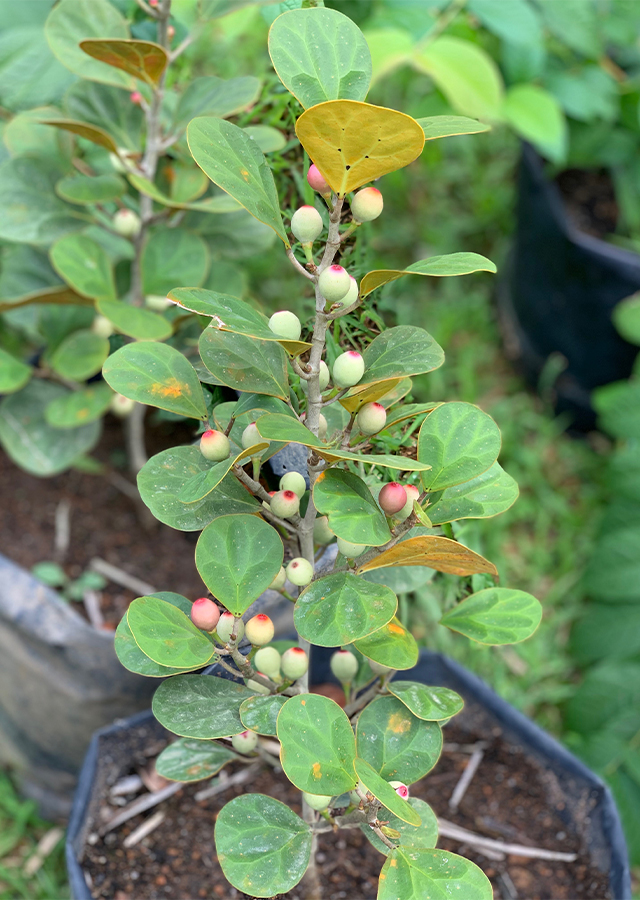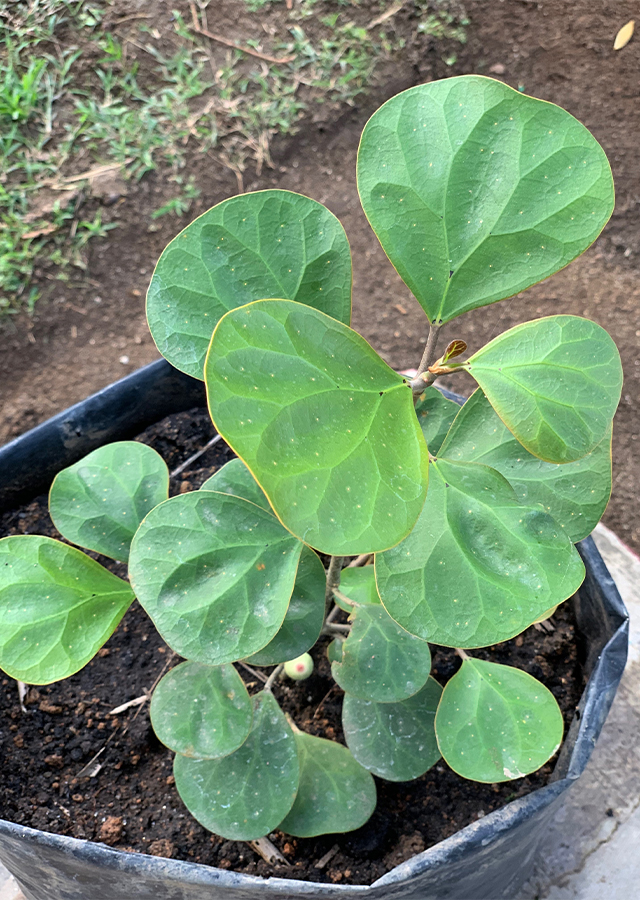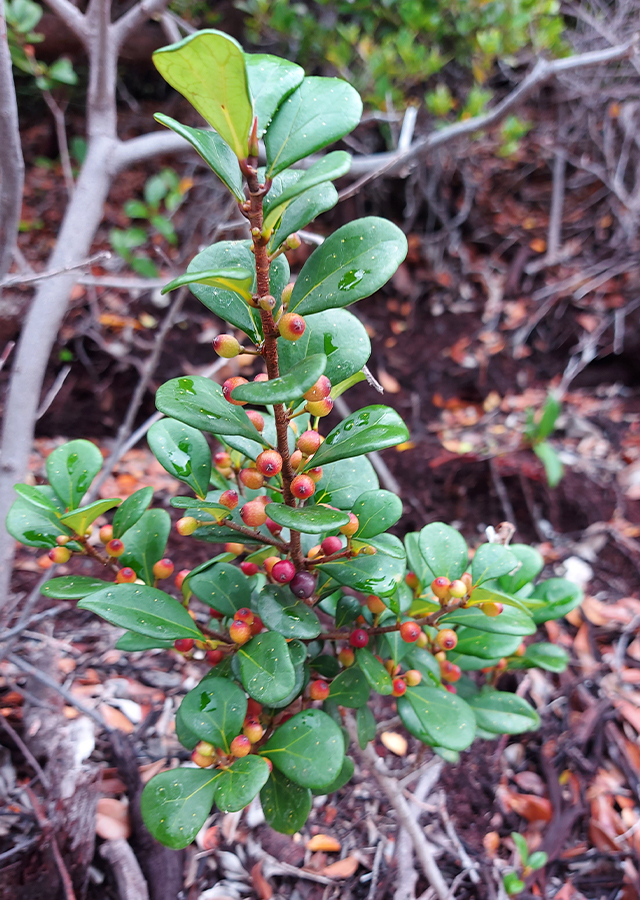Mistletoe fig
Ficus deltoidea Jack
Moraceae
Location in our garden
Green House



Synonym
Erythrogyne lutescens (Desf.) Vis.
Ficus diversifolia Blume
Ficus lutescens Desf.
Habitus
Shrubs. An evergreen shrub that can reach a height of 2 meters or a tree that can reach 6 meter height
Part Used
Leaves
Roots
Twigs
Growing Requirements
Full Sunshine
Need Shade
Drought Resistant
Habitat
Forest
Mountains
Rocky Areas
Overview
The mistletoe fig is indigenous to the Malay Archipelago and is found in Thailand, Indonesia, and Malaysia. The plant has also been planted beyond its natural habitat. The plant has about 15 varieties with different morphological features. Ficus deltoidea var. angustifolia and Ficus deltoidea var. deltoidea, known as male and female plants respectively are the two most popular mistletoe fig varities.
Vernacular Names
Tabat Barito (Indonesia), Mas Cotek, Telinga Beruk, or Serapat Angin (Malay), Sempit-Sempit and Agoluran (Sabah, Sarawak, and Kalimantan)
Agroecology
Ficus deltoidea can be found in a variety of habitats such as sandy heath forests, bushy areas, peat-swamp, coastal, bogs, and riversides. Most varieties are found below 1200 m above sea level but some varieties are also found in higher altitudes. Most varieties grows below 1200 m altitude, but some varieties are also found at higher altitude. Some varieties live as epiphytes while others live as terrestrial plants, undershrubs, and trees.
Morphology
- Barks - whitish light grey bark.
- Leaves - leaves dimension, shape, venation, waxy glands, and petiole length are varied. the leaves shape may be deltoid, elliptic, obovate, spathulate, or rhomboid.
- Flowers - inflorescence form syconium and pollinated by a specialized wasp from Agaonidae subfamily.
- Fruits - small, spherical to round, yellow to orange-red in color, with thin and delicate skin
Cultivation
- generative propagation through seed may occur but with a low germination percentage.
- Vegetative propagation is preferable.
Chemical Constituents
Shikimic acid, aliphatics, acyclic monoterpenes, sesquiterpenes, flavonoids.
Traditional Medicinal Uses
- For centuries powdered roots and leaves have been used to treat wounds, rheumatism, sores, and other ailments for centuries in Malaysia,
- The leaves decoction is used as an antidiabetic treatment, after-birth tonic, to treat menstrual cycle disorders and leucorrhoea.
- In Indonesia, the entire plant is used as an aphrodisiac health tonic for women
- The fruit is chewed to treat toothache, cold, and headache.
Part Used
Reference Sources
Bunawan, H., Amin, N.M., Bunawan, S.N., Baharum, S.N. and Mohd Noor, N., 2014. Ficus deltoidea Jack: a review on its phytochemical and pharmacological importance. Evidence-Based Complementary and Alternative Medicine, 2014.
Rosnah, J., Khandaker, M.M. and Boyce, A.N., 2015. Ficus deltoidea: Review on background and recent pharmacological potential. Journal of Agronomy, 14(4), p.310.


